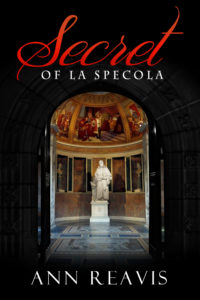The Museum of Zoology and Natural History, best known as La Specola (because of the astronomical observatory and a weather station installed in one of the rooftop towers of the palazzo in 1790), is an eclectic natural history museum in Florence, located near to the Pitti Palace on Via Romana. It’s one of Tuscan Traveler’s favorite places to visit, not only for its lack of the crowds that are making popular Florentine museums unbearable, but for its one-of-a-kind collection mostly sourced from the 18th and 19th centuries.
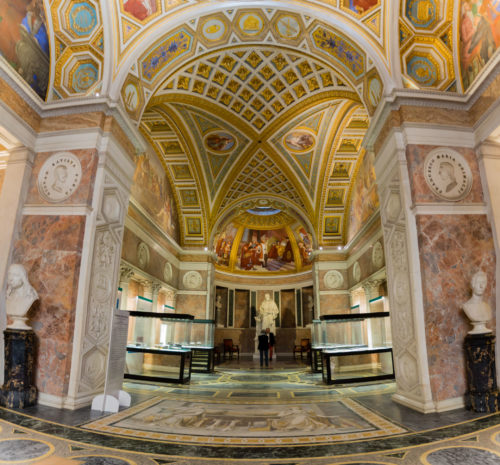
Much of the collection can be traced back to the Medici family and the subsequent Lorraine Grand Dukes of Tuscany. It is the oldest scientific museum of Europe.
Located in the former Palazzo Torrigani, L’Imperiale e Regio Museo di Fisica e Storia Naturale (The Imperial and Royal Museum for Physics and Natural History) was founded in 1771 by Grand Duke Peter Leopold, with the aid of the abbot Felice Fontana (1730-1805), to publicly display the large collection of natural curiosities such as fossils, animals, minerals and exotic plants acquired by several generations of the Medici.
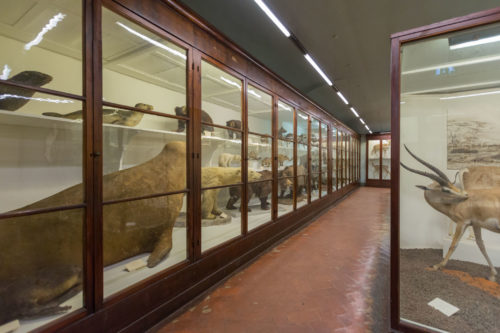
At the time of its opening, and for the first years of the 19th century, it was the only scientific museum or “wunderkammer” of its kind specifically created for the public to view. It opened on February 21, 1775 to the general public.
Today, the museum spans 34 rooms (24 of zoology and 10 of wax modeling) and contains thousands of zoological subjects, such as a stuffed hippopotamus (a 17th-century Medici pet that once lived in the Boboli Gardens), as well as snakes, birds, alligators and giant tortoises, and all variety of mammals from every continent.
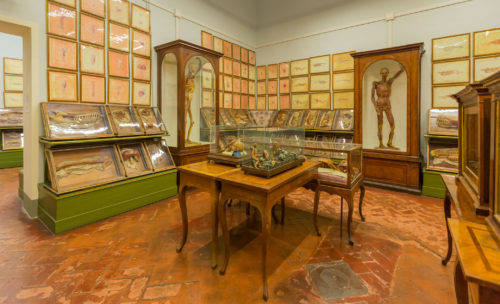
Most unusual is a collection of anatomical waxes (including those by Gaetano Giulio Zumbo and Clemente Susini (1754-1814)), a scientific art developed in Florence in the 17th century for the purpose of teaching anatomy to medical students. This collection is very famous worldwide for the incredible accuracy and realism of the details, modeled and copied from corpses.
The museum also has a large collection of historical equipment for the study of physics, chemistry and astronomy equipment but much of those were distributed to other museums and institutes that occurred between 1860 and 1930.
The Tribuna, on the lower floor, planned and built by the architect Giuseppe Martelli in 1841 to honor the memory of the great Tuscan scientist Galileo, is decorated with frescoes of Galileo in the Venetian court presenting his telescopes to the Doges and pietra dura decorations representing some of the principal Italian scientific achievements from the Renaissance to the late 18th century.
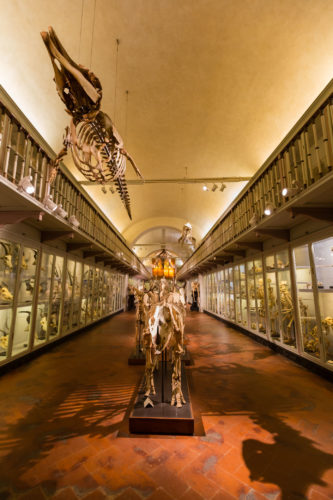
The Hall of the Skeletons (Salone degli Scheletri), inaugurated on the ground floor in March 2001 after 5 years of restoration, is only open by special request. It displays the majority of the ontological, and especially mammalian, finds owned by the Museum. This important scientific collection is consulted regularly by both Italian and foreign zoologists and paleontologists. There are more than 3,000 full or partial skeletons in the hall, some very old – the elephant’s skeleton from the 1700’s, and rare, even extinct animals, such as the Sonda Rhinoceros, a Thylacine ( Tasmanian Tiger), an Echidna (an egg-laying mammal), a Platypus, and giant ant-eaters. There are also primates and human skeletons.
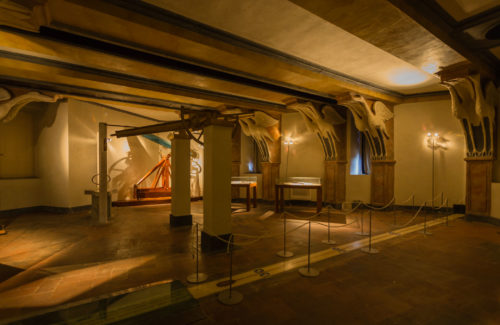
The top floor of the palazzo – and part of the museum – contains an octagonal tower room of telescopes (and great views), known as the Hall of the Storks (La Sala delle Cicogne) because of the decorative carvings supporting the vaulted ceiling. This was the Specola where Grand Duke Peter Leopold had his observatory and weather station. Giuseppe Antonio Slop de Cadenberg (1740-1808), a Trentino astronomer and teacher, designed the observatory, choosing the stork as a symbol of knowledge.
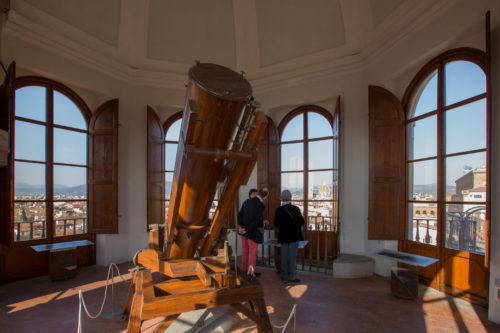
The collection includes a metal sundial (1784), one of the three existing worldwide (the other two are in Bologna and Budapest), which accurately measures time and date, and is decorated with marble signs of the zodiac, as well as an 18th century telescope used for night sky observation. This part of the museum also requires a special request to enter. (This can be arranged for the same day as entry into the Hall of the Skeletons.)
The visitor who wants to get the most out of a visit to La Specola is advised to call in advance and arrange entry to the Hall of the Skeletons and the Hall of the Storks during their visit to the main museum complex.
La Specola Museum of Natural History and Zoology
Address: Via Romana 17. Open daily from 9.30 a.m. to 4.30 p.m.; Closed on Mondays
A new novel of Florentine mystery and suspense has just been released: Secret of La Specola by Ann Reavis (the second book in the Caterina Falcone Mystery series.) Available at Amazon.com, Amazon.com eBook, Amazon.it, and Amazon.co.uk
